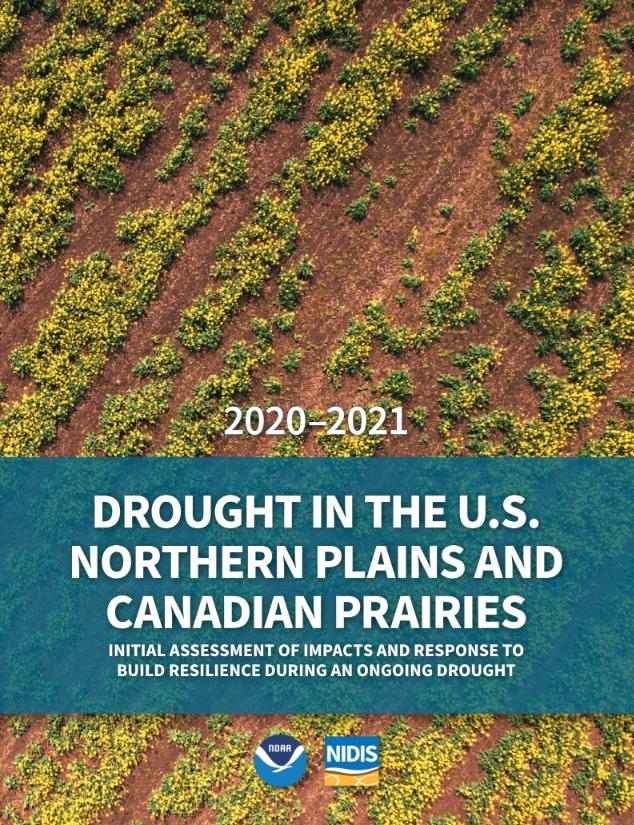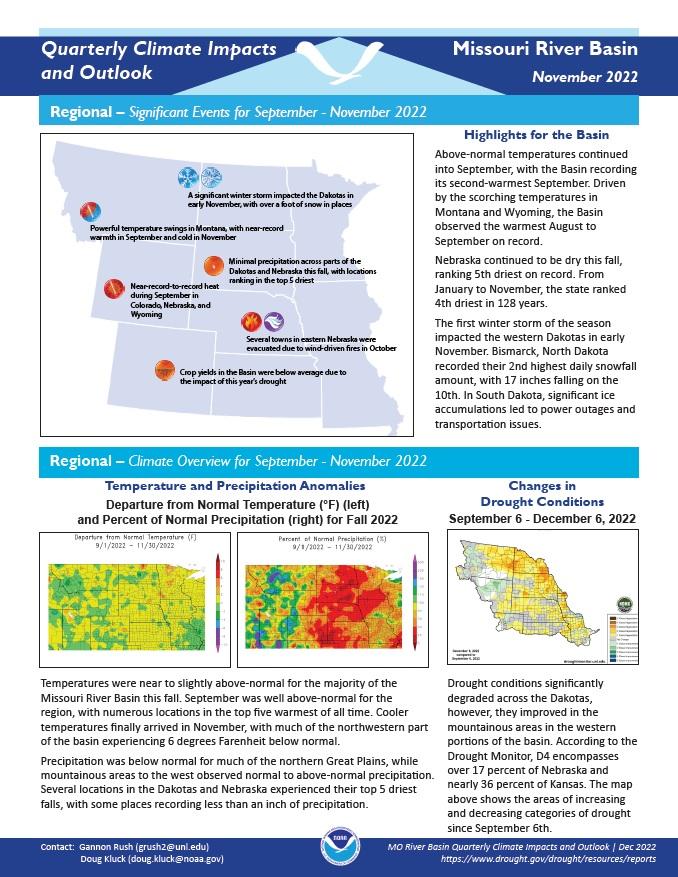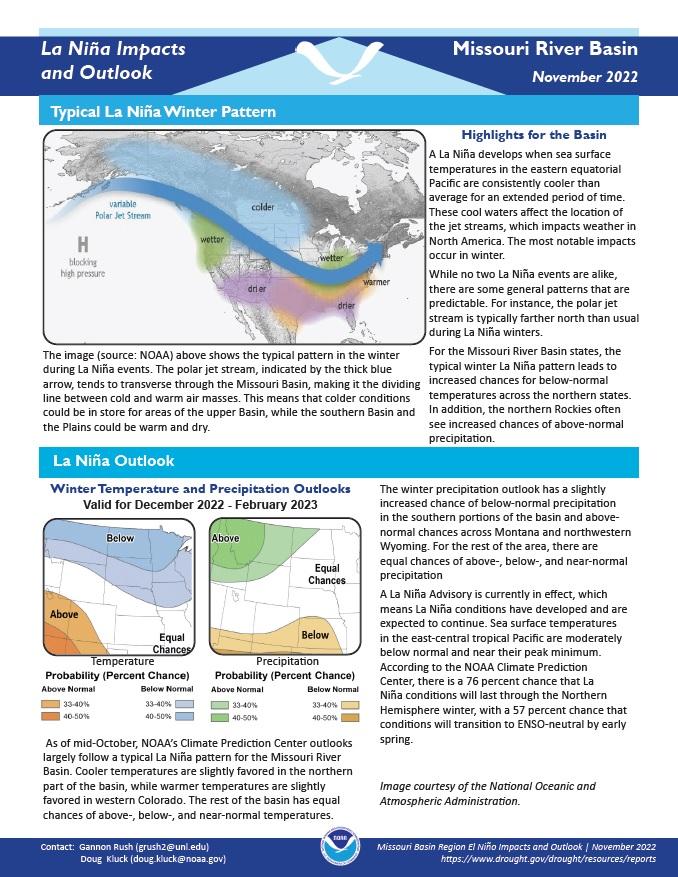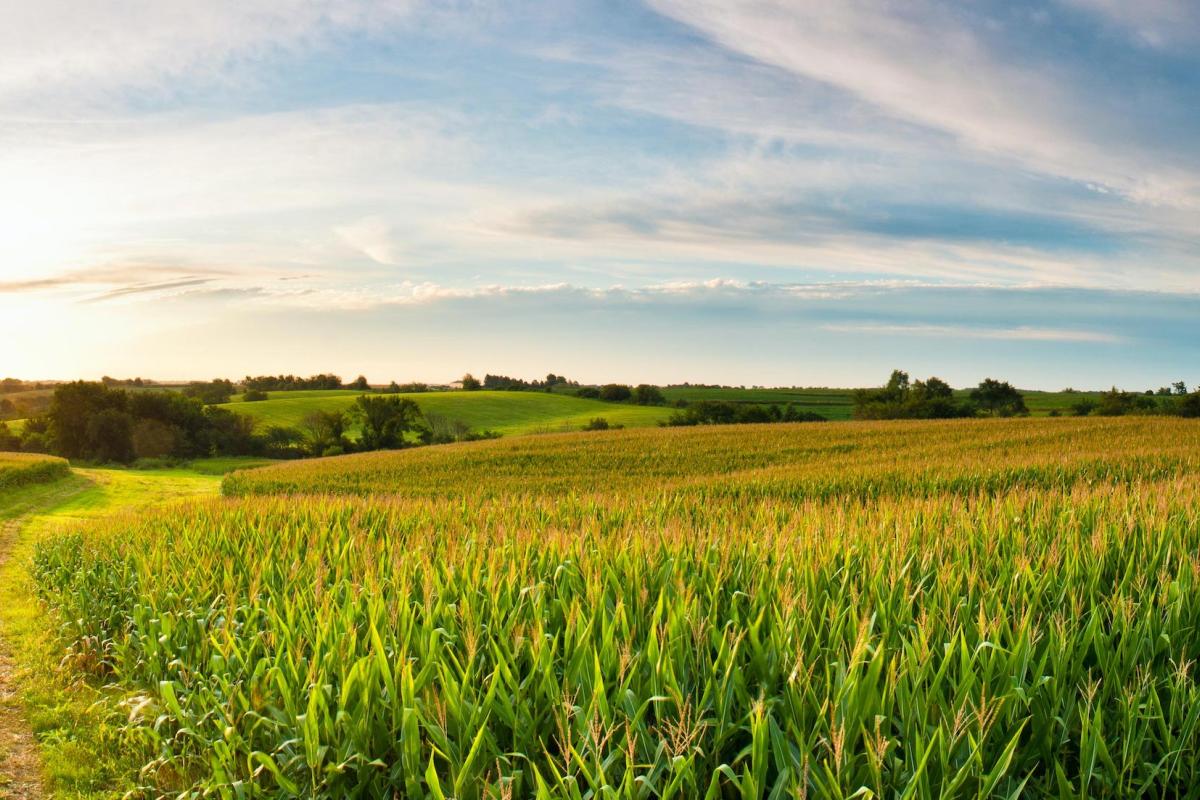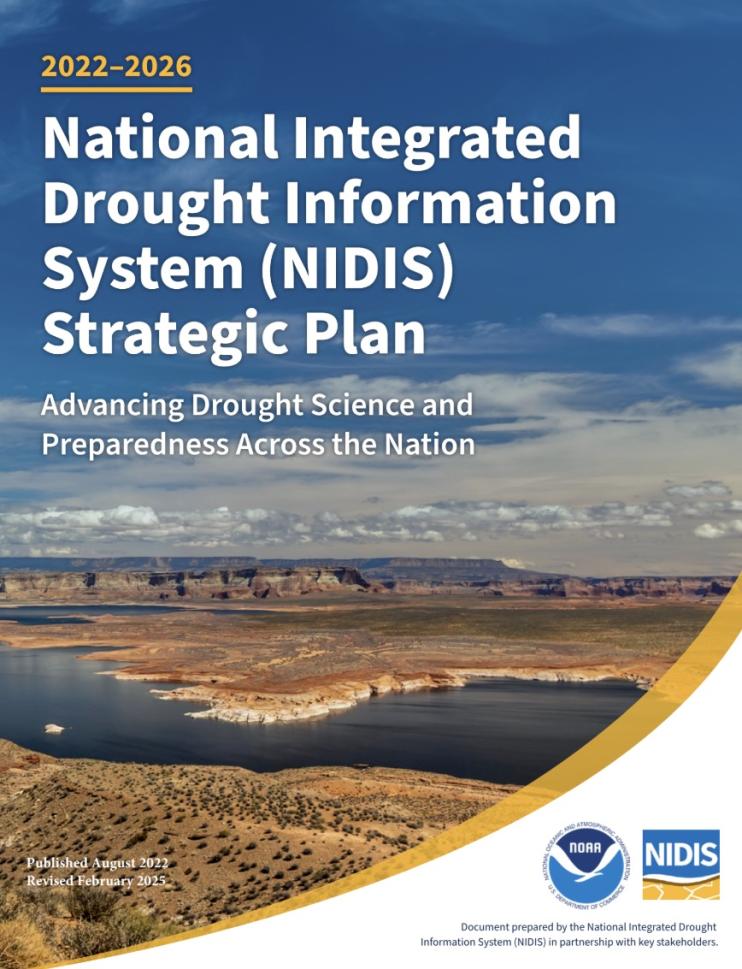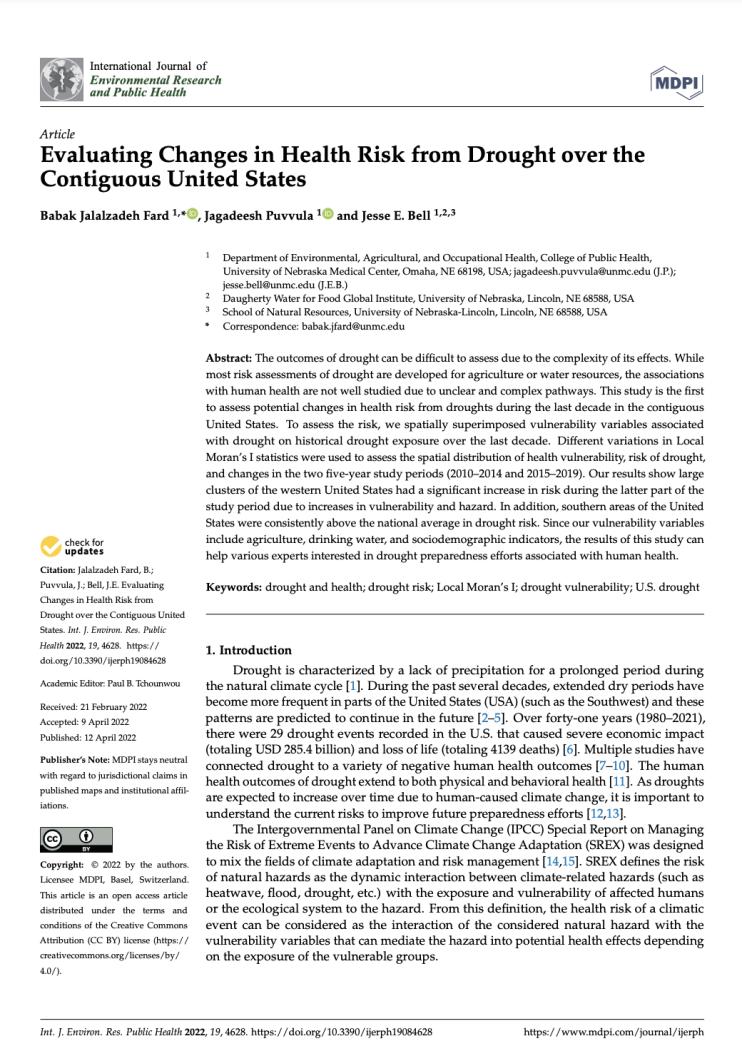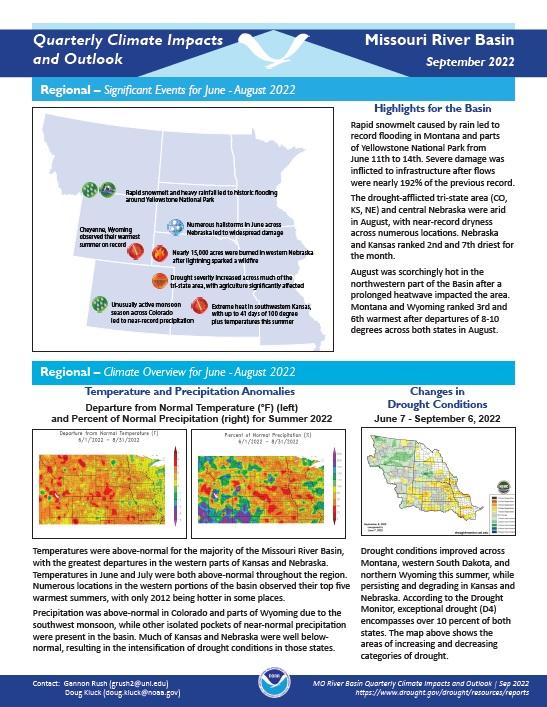For the latest forecasts and critical weather information, visit weather.gov.
The 2020–2021 drought of the greater U.S. Northern Plains and Canadian Prairies was a multi-billion-dollar event that had wide-reaching impacts on the region’s communities, ecosystems, water resources, and agricultural systems. Building off of the lessons learned from the flash drought of 2017—the last drought to affect the region—the 2020–2021 Drought in the U.S. Northern Plains and Canadian Prairies report advances understanding of drought response and preparedness actions by highlighting new efforts, along with outstanding gaps and needs.
Quarterly Climate Impacts and Outlook for the Missouri River Basin for September–November 2022. Dated December 2022.
Temperatures were near to slightly above-normal for the majority of the Missouri River Basin this fall. Precipitation was below normal for much of the northern Great Plains, while mountainous areas to the west observed normal to above-normal precipitation.
This handout provides information on the typical La Niña winter pattern; the La Niña outlook; potential winter and spring impacts; and comparisons of conditions during previous La Niña years for the Missouri River Basin region. Updated November 2022.
NOAA’s Regional Climate Services Program created these outlooks to inform the public about climate impacts within their respective regions. Each regional report contains easy-to-understand language, and anyone can access them through the Drought Portal.
The 2022–2026 National Integrated Drought Information System (NIDIS) Strategic Plan outlines and advances NIDIS’s approach to building a national drought early warning system (DEWS).
This study, led by researchers from the University of Nebraska Medical Center and published in the International Journal of Environmental Research and Public Health, assessed "potential changes in health risk from droughts during the last decade in the contiguous United States."
Quarterly Climate Impacts and Outlook for the Missouri River Basin for June–August 2022. Dated September 2022.
Temperatures were above normal for the majority of the Missouri River Basin, with the greatest departures in the western parts of Kansas and Nebraska. Precipitation was above normal in Colorado and parts of Wyoming due to the Southwest Monsoon, while other isolated pockets of near-normal precipitation were present in the basin. Much of Kansas and Nebraska were well below normal, resulting in the intensification of drought conditions in those states.


